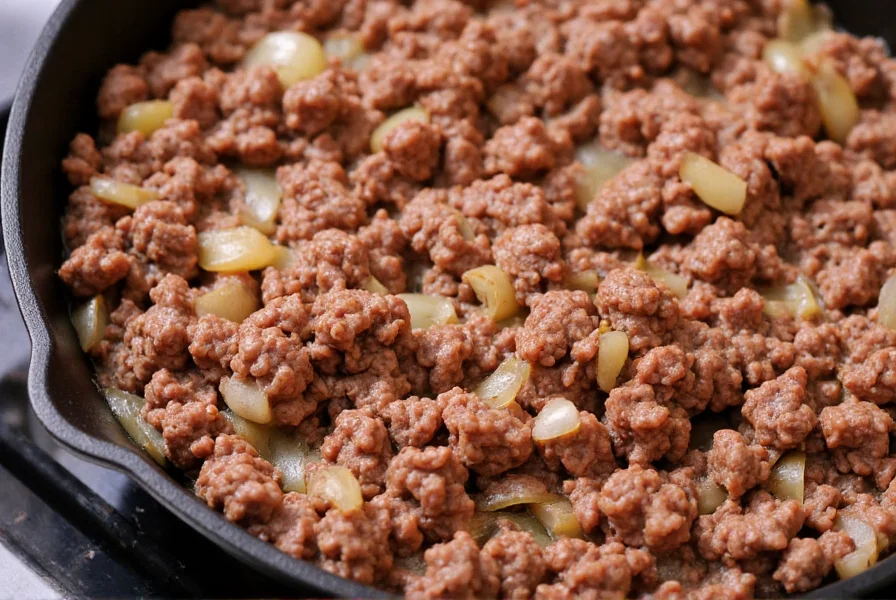A well-crafted chili ingredients list forms the foundation of this beloved comfort food. Whether you're preparing a quick weeknight dinner or slow-cooking for game day, understanding the essential components ensures consistent results. This comprehensive guide details every ingredient category with specific recommendations for proportions, substitutions, and regional variations.
Core Protein Components
The protein base defines your chili's character. Traditional recipes use:
- Ground beef (80/20) - Provides rich flavor and optimal fat content for browning
- Beef chuck roast - Cut into 1/2-inch cubes for authentic Texas-style chili
- Turkey or chicken - Leaner alternative requiring additional fat during cooking
- Plant-based proteins - Textured vegetable protein (TVP) or extra-firm tofu for vegetarian versions

Bean Varieties and Preparation
While controversial in some regions, beans add heartiness and fiber. Proper preparation prevents mushiness:
| Bean Type | Preparation Method | Flavor Profile |
|---|---|---|
| Dark red kidney beans | Soak overnight, cook separately | Meaty texture, holds shape well |
| Pinto beans | Add during last 30 minutes | Creamy texture, earthy flavor |
| Black beans | Rinse canned version thoroughly | Sweet notes, contrasts spicy elements |
| No beans | N/A | Pure meat focus (Texas tradition) |
Essential Vegetable Base
The "holy trinity" of chili vegetables creates flavor depth:
- Yellow onions - 1 large per pound of meat, finely diced
- Garlic - 3-4 cloves minced (never powdered for best flavor)
- Bell peppers - Green for traditional, red for sweetness
- Tomatoes - Diced canned (fire-roasted preferred) or tomato paste for concentrated flavor
Pro tip: Sauté vegetables until translucent but not browned to maintain bright flavor notes.
Spice Blend Formulation
The spice mix makes or breaks authentic chili. For a 2-pound meat batch:
- Chili powder: 3 tablespoons (Ancho-based preferred)
- Ground cumin: 1.5 tablespoons
- Smoked paprika: 1 tablespoon
- Cayenne pepper: 1/2 teaspoon (adjust to heat preference)
- Oregano: 1 teaspoon (Mexican preferred)
- Unsweetened cocoa powder: 1 teaspoon (for depth, not chocolate flavor)
Toast whole spices before grinding for maximum flavor release. Add spices after browning meat but before liquid for optimal flavor integration.
Liquid Components Guide
The cooking liquid affects texture and flavor development:
- Beef broth - Low-sodium preferred (4 cups for 2 lbs meat)
- Dark beer - 1 cup replaces equal broth portion (adds complexity)
- Coffee - 1/2 cup strong brew enhances meat flavors
- Vinegar - 1 tablespoon added at end brightens flavors
Maintain a 3:1 liquid-to-solid ratio. Simmer uncovered if too thin, add liquid if too thick during cooking.
Dietary Adaptation Strategies
Modify your chili ingredients list for special diets without sacrificing flavor:
- Vegetarian/Vegan: Substitute meat with 2 cups cooked lentils + 1 cup mushrooms. Use vegetable broth and omit dairy toppings.
- Gluten-free: Naturally compliant if using pure spices (check labels for anti-caking agents).
- Keto: Increase meat ratio, omit beans and tomatoes, use bone broth and extra vegetables like zucchini.
- Low-sodium: Use no-salt-added tomatoes, low-sodium broth, and increase herbs like cilantro.
Ingredient Substitution Reference
Unexpected pantry shortages needn't ruin your chili plans:
- No chili powder: Combine 2 tsp paprika + 1 tsp cumin + 1/2 tsp garlic powder + 1/4 tsp cayenne
- No beans: Add 1 cup cooked quinoa or extra diced potatoes for texture
- No tomatoes: Use 1/4 cup tomato paste diluted with broth
- Mild heat preference: Replace cayenne with sweet paprika, add heat gradually

Regional Style Comparisons
Understanding regional differences helps customize your ingredients list:
- Texas Red: Meat only (no beans), minimal spices, beef broth base
- Cincinnati Style: Chocolate, cinnamon, and oregano additions, served over spaghetti
- Carolina Style: Uses vinegar-based hot sauce and no beans
- Midwest Style: Includes both beans and meat, often with sweet elements
Proportion Guidelines for Perfect Balance
Follow this ratio for balanced flavor development per pound of meat:
- Vegetables: 1.5 cups diced
- Beans: 1 cup cooked (if using)
- Tomatoes: 1 (14.5 oz) can
- Spices: 5 tablespoons total blend
- Liquid: 2 cups
Adjust spice levels gradually during cooking - flavors intensify over time. Always taste before final seasoning.
Ingredient Quality Considerations
Not all ingredients perform equally in chili:
- Chili powder: Seek brands listing only ground chilies (no fillers)
- Canned tomatoes: Fire-roasted varieties add smoky depth
- Beans: Cook from dry for best texture control
- Meat: Choose well-marbled cuts for slow-cooked versions
Freshly grind whole spices within 2 weeks of cooking for maximum potency. Store spice blends in airtight containers away from light.










 浙公网安备
33010002000092号
浙公网安备
33010002000092号 浙B2-20120091-4
浙B2-20120091-4